Discover South Korea’s Top 7 Non-Vegetarian Dining Gems
Introduction
South Korean cuisine is diverse and vibrant, known for its bold flavors and unique dishes. It features staples like kimchi, bulgogi, and bibimbap, as well as popular street foods like tteokbokki and kimbap. Korean barbecue, where diners grill meat at the table, is a popular social dining experience. Street foods like tteokbokki (spicy rice cakes) and kimbap (seaweed-wrapped rice rolls) are widely enjoyed. Other notable dishes include samgyeopsal (grilled pork belly), dakgalbi (spicy stir-fried chicken), and jjajangmyeon (noodles in black bean sauce). Traditional soups and stews like kimchi jjigae (kimchi stew) and doenjang jjigae (soybean paste stew) provide comforting flavors. South Korea also has a strong culture of banchan, which consists of various small side dishes served alongside the main meal.
The purpose of the article “The 7 Must-Try Non-Vegetarian Eateries” is to provide readers with a curated list of seven recommended restaurants or eateries that specialize in non-vegetarian cuisine.
Table of Contents
BBQ Bliss in Seoul
Seoul’s barbecue culture is a vibrant and essential part of the city’s culinary scene. Known for its sizzling grills and mouthwatering aromas, barbecue restaurants abound, offering a unique dining experience. Korean barbecue, or “gogi-gui,” involves grilling various types of meat, such as beef, pork, and chicken, right at the table. Diners can enjoy tender, marinated cuts cooked to perfection and wrapped in lettuce leaves with savory sauces and flavorful accompaniments. Seoul’s barbecue culture showcases the city’s love for communal dining, socializing, and indulging in delicious grilled meats.
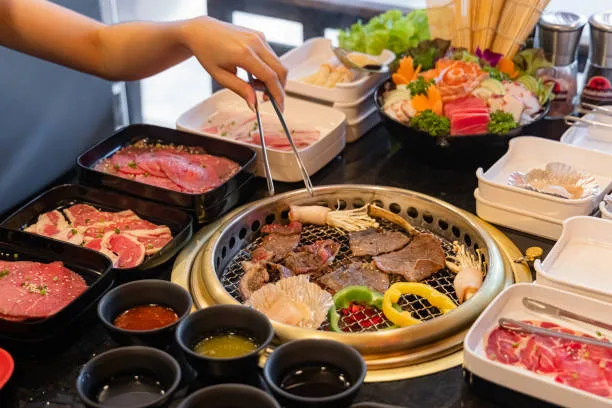
Top barbecue restaurants in Seoul
- Maple Tree House: Known for its high-quality cuts of beef, Maple Tree House offers a cozy and rustic atmosphere with attentive service.
- Hanwoo Yeongyang Center: This restaurant specializes in hanwoo, premium Korean beef. It provides a traditional barbecue experience with top-grade beef and a variety of side dishes.
- Gwangjang Market: Located in a bustling market, Gwangjang Market offers an authentic street food experience. You can find numerous barbecue stalls where you can grill your own meat and enjoy it with other Korean delicacies.
- Seorae Village: Seorae Village is famous for its galmaegisal, a flavorful pork skirt steak. You can grill the tender meat and enjoy it with a wide range of condiments.
- Palsaik Samgyupsal: Palsaik Samgyupsal is renowned for its eight-flavored pork belly, where each slice is marinated in a different sauce. The restaurant offers a unique and flavorful dining experience.
- Wangbijib: Wangbijib is a popular barbecue chain known for its high-quality beef and pork. The restaurant provides a modern and stylish ambiance, making it a favorite among locals and tourists.
Coastal Treasures in Busan
Busan, South Korea’s second-largest city, is a coastal paradise renowned for its fresh and diverse seafood delights. Nestled by the sea, Busan offers a vibrant culinary scene where visitors can indulge in an array of oceanic flavors. From sashimi and grilled fish to seafood stews and spicy seafood noodles, the city is a haven for seafood enthusiasts. Busan’s famous Jagalchi Fish Market is a must-visit, where you can witness the bustling seafood trade and sample an assortment of freshly caught delicacies. Prepare to embark on a tantalizing seafood journey in the heart of Busan.
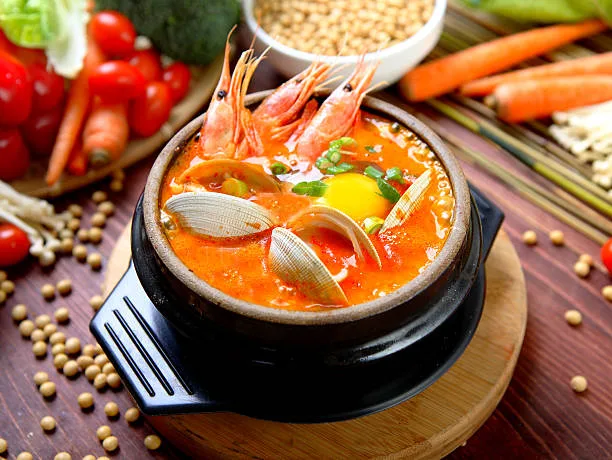
Best seafood restaurants in Busan
- Jagalchi Fish Market: This iconic market is a seafood lover’s paradise. You can purchase fresh seafood from the market stalls and have it prepared on-site at one of the many restaurants within the market.
- Millak Raw Fish Town: Located near Gwangalli Beach, Millak Raw Fish Town is renowned for its sashimi restaurants. Here, you can enjoy a variety of raw fish dishes, including hweh (raw fish) platters and hoe-deopbap (rice topped with sashimi).
- Busan Fishcake Alley: Tucked away in Taejongdae Park, Busan Fishcake Alley is famous for its diverse selection of fishcakes. You can savor different flavors and textures of fishcakes made from various seafood ingredients.
- Chungnyeolsa Seafood Market: Situated near Haeundae Beach, this seafood market offers a wide range of fresh seafood options. Visitors can choose their desired seafood and have it cooked to order at one of the nearby restaurants.
- Mangchi Market: Located in Nampo-dong, Mangchi Market features numerous seafood restaurants. You can try a variety of dishes, such as grilled fish, seafood stews, and stir-fried seafood, showcasing the flavors of Busan’s coastal cuisine.
Daegu Delicacies
Daegu, a vibrant city in South Korea, is known for its unique and delicious culinary offerings. From savory dishes to sweet treats, Daegu boasts a range of local specialties. One famous dish is “makchang,” grilled pork intestines seasoned with spices and served with various dipping sauces. Another must-try is “seokgatang,” a hearty herbal soup made with young lamb and medicinal herbs. For dessert, indulge in “gyeongdan,” chewy rice cakes filled with sweet ingredients. Daegu’s culinary scene promises a delightful exploration of distinctive flavors and culinary traditions.

Must-visit non-vegetarian restaurants in Daegu
- Daegu Seomun Market – While not a traditional restaurant, this bustling market is a food lover’s paradise. You can find various street vendors and stalls offering a wide range of non-vegetarian options, including tteokbokki (spicy rice cakes), tempura, grilled skewers, and more.
- Dwaeji Gukbap Alley – This area is known for its pork soup (dwaeji gukbap), a local specialty. You can find numerous small restaurants serving piping hot bowls of pork and rice soup. It’s a must-try for meat lovers.
- Braai Republic – If you’re in the mood for South African cuisine, Braai Republic is the place to go. They serve a variety of grilled meats, including boerewors, lamb chops, and steaks. The ambiance is unique, and it’s a great spot for a different culinary experience.
- Galbi Jjim Alley – Daegu is famous for its galbi jjim, a Korean braised short rib dish. The Galbi Jjim Alley in the city offers several restaurants specializing in this delectable dish. You can savor tender, flavorful beef ribs in a rich, savory sauce.
- Mud Flat Crab Restaurants – Daegu is located near the coast, so you’ll find excellent seafood options. Mud flat crab is a regional specialty, and there are restaurants that serve this delicious crab in various styles, such as soy sauce marinated crab or spicy crab stew.
- Daegu Samgyetang Street – Samgyetang is a Korean ginseng chicken soup. Daegu is famous for its version, and there’s a street dedicated to restaurants serving this wholesome dish. It’s especially popular in the summer for its purported health benefits.
- Galchi Jorim Alley – If you enjoy fish, Galchi Jorim Alley is the place to be. It’s known for its spicy braised cutlassfish, a popular dish in Korean cuisine. The fish is cooked in a savory, spicy sauce that’s sure to tickle your taste buds.
Jeju Island’s Island Flavors
Jeju Island, a South Korean gem, is renowned for its unique specialties. From its prized black pork, known for its exceptional flavor and tenderness, to its fresh seafood, including abalone and seaweed, the island’s cuisine offers a delectable taste of the sea. Jeju’s famous green tea is a must-try, with lush tea plantations dotting the landscape. Additionally, the island boasts delicious citrus fruits, such as Hallabong oranges. With its distinct culinary offerings, Jeju Island is a paradise for food enthusiasts seeking a blend of local flavors and natural beauty.

Top restaurants on Jeju Island
- Olle 6 Beonyeong-ro Restaurant – Known for its fresh seafood, this restaurant offers stunning ocean views and serves dishes like abalone porridge and grilled fish.
- Hanokjib Maeil Dabang – A charming traditional Korean restaurant in a Hanok (traditional Korean house), offering a variety of local dishes, including black pork and Jeju’s specialty, black pig noodle soup.
- The Seaes Hotel & Resort – Ondol Restaurant – Enjoy a luxurious dining experience with a wide range of Korean cuisine, featuring fresh seafood and Jeju’s famous black pork.
- Dodumyeon – Famous for its handmade Jeju black pork dumplings, this restaurant is a local favorite and offers a unique twist on traditional Korean flavors.
- Gosam Gogi – A popular spot for barbecue lovers, Gosam Gogi offers high-quality black pork barbecue with a rustic, traditional ambiance.
- Saewookkang – For a taste of Jeju’s delicious seafood, visit Saewookkang, known for its tasty grilled prawns, seafood pancakes, and other marine delicacies.
- Baramsori Restaurant – Offering a blend of Korean and Western cuisine, this restaurant is renowned for its stunning sunset views over the ocean and a diverse menu that includes steak and seafood.
- Jungmun Saekdal Beach Restaurant Street – Explore this beachside street with numerous restaurants serving a variety of seafood dishes, offering fresh catches and spectacular coastal views.
- Samseonghyeol Jeonbok Bossam – A popular spot for Jeju’s famous bossam (pork belly wraps) and fresh seafood. Enjoy a mix of flavors in this welcoming restaurant.
- Hakrim Dabang – Experience Jeju’s traditional tea culture with a visit to Hakrim Dabang, a tearoom that offers a tranquil setting to savor Korean teas and sweets.
Traditional Delights in Gyeongju
Gyeongju, South Korea’s ancient capital, is a culinary treasure trove of historical cuisine. Renowned for its deep-rooted traditions, Gyeongju offers a glimpse into the flavors of the Silla Dynasty. Delight in dishes like Gyeongju bread, a sweet treat dating back to the 8th century, or haejangguk, a hearty hangover soup. Experience the rich tastes of the past through dishes prepared with locally sourced ingredients and time-honored cooking techniques, transporting you back in time while savoring the essence of Gyeongju’s history.

Iconic non-vegetarian eateries in Gyeongju
- Ssambap Alley (Ssambap Golmok) – This bustling alley is famous for its ssambap, a dish where you wrap a variety of ingredients in lettuce leaves. Try the flavorful pork belly, grilled to perfection, and create your own delicious wraps.
- Ssambapjib Chamsil – Another great spot for ssambap, this restaurant is known for its high-quality ingredients and traditional flavors. You can savor various meats and accompaniments in a delightful ssambap meal.
- Chil Po Restaurant – A local favorite, Chil Po specializes in traditional Korean dishes. Their grilled mackerel and bulgogi (marinated beef) are highly recommended.
- Daereungwon Jatjuk Street – Located near the Daereungwon Royal Tomb Complex, this street is famous for its jatjuk (nut porridge) and offers a variety of savory options, including gomchwi (bitter herbs) and grilled fish.
- Seorabeol Galbi – Known for its scrumptious Korean barbecue, Seorabeol Galbi is a popular choice for those looking to indulge in grilled meats, particularly beef and pork, in a relaxed setting.
- Hwangnam Bread – While not a traditional non-vegetarian eatery, Hwangnam Bread is famous for its centuries-old bread recipe. The pastries are filled with red beans or seeds and make for a delightful snack.
- Gyeongju Sikdang – A local institution, Gyeongju Sikdang offers a taste of authentic Korean home cooking. Try their spicy pork bulgogi and other classic dishes.
- Gyeongju Makchang – This restaurant specializes in makchang (grilled pork intestines), a popular Korean delicacy. It’s a unique experience for adventurous eaters.
Street Food Extravaganza
South Korea’s street food culture is a vibrant tapestry of flavors, aromas, and bustling energy. From the bustling streets of Seoul to local markets across the country, it’s a culinary adventure waiting to be explored. Sample tteokbokki (spicy rice cakes), hotteok (sweet pancakes), odeng (fish cake skewers), and gimbap (rice rolls) from colorful stalls. These portable delights offer a taste of South Korea’s rich culinary heritage. Street food isn’t just about eating; it’s a lively, communal experience that immerses you in the heart of Korean gastronomy.

Exploring street food in Myeongdong
Exploring the vibrant street food scene in Myeongdong, Seoul is a must for any food lover. This bustling district is a street food haven where you can sample a wide variety of Korean delicacies. From the sizzle of hotteok (sweet pancakes) to the aroma of tteokbokki (spicy rice cakes), the streets are lined with stalls offering delectable treats. Don’t miss out on other favorites like kimbap (seaweed rice rolls), odeng (fish cake skewers), and the famous Korean fried chicken. It’s a sensory adventure that allows you to savor the rich and diverse flavors of South Korean street cuisine while enjoying the lively atmosphere of Myeongdong.
Tteokbokki is a beloved Korean street food, featuring chewy rice cakes smothered in a fiery red chili sauce. The spicy-sweet combination, often accompanied by fish cakes and scallions, creates an irresistible flavor explosion. It’s a staple dish that captures the essence of Korean street cuisine, offering a tantalizing taste sensation.
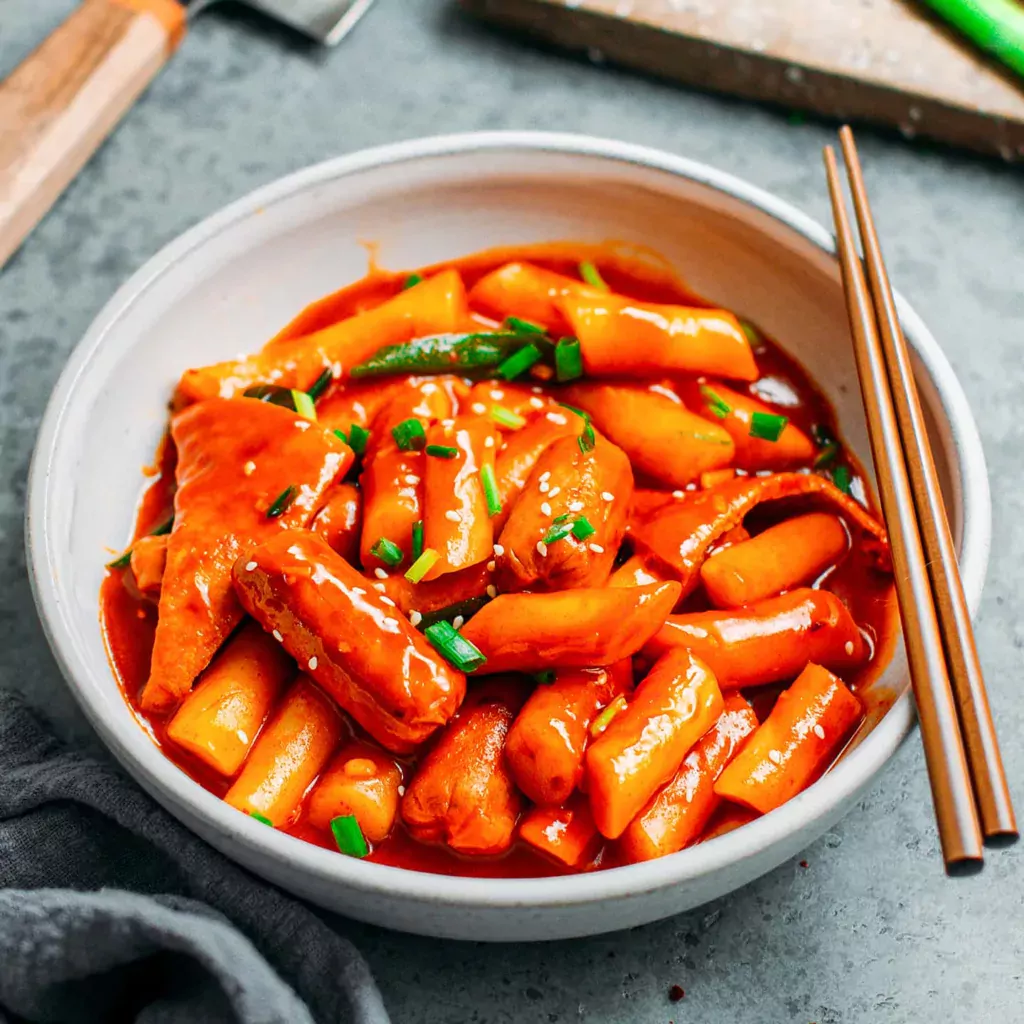
Crispy fried chicken is a universally cherished dish, celebrated for its golden-brown, crunchy exterior that encases tender, succulent meat. The magic lies in the perfect blend of seasonings, creating a harmonious balance of flavors and textures. Whether it’s Southern-style, Korean-inspired, or any other variation, the appeal of crispy fried chicken is undeniable, making it a beloved comfort food worldwide. Each bite is a symphony of crispiness and juiciness, offering a truly satisfying culinary experience.
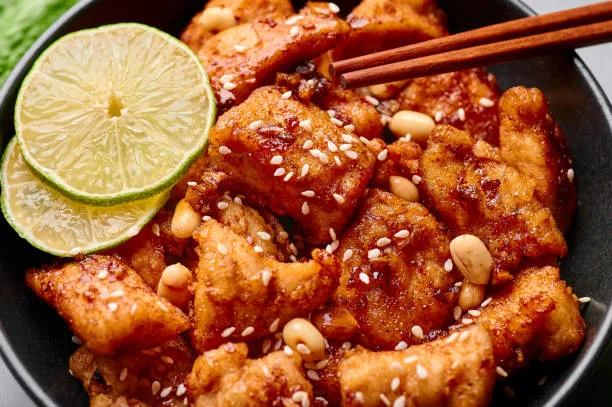
Sweet and savory crepes are a versatile delight, perfect for any time of day. The thin, delicate pancakes can be filled with a world of flavors. On the sweet side, they’re adorned with Nutella, fruit, or whipped cream, creating a dessert-like treat. Meanwhile, savory options might include cheese, ham, and fresh veggies, transforming them into a satisfying meal. This duality of flavors and fillings is what makes crepes a cherished culinary canvas, adaptable to both sweet and savory cravings.
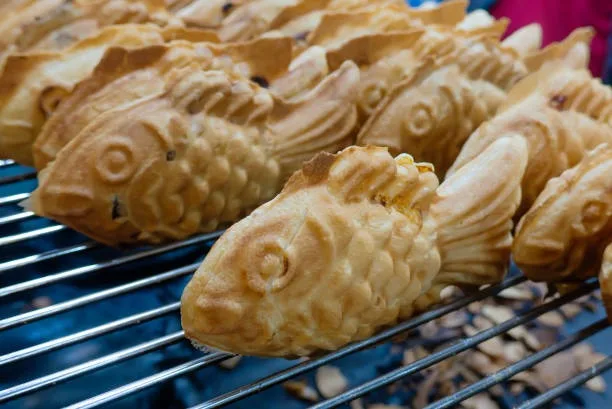
Korean Dining Etiquette
Traditional dining etiquette varies across cultures, but certain common principles prevail. A universal rule is respect, shown through actions like waiting for elders to start eating, using proper utensils, and thanking the host. In Japan, slurping noodles indicates enjoyment, whereas in Western cultures, it’s considered impolite. Similarly, belching can be a compliment in some Asian countries but should be avoided elsewhere. Keeping elbows off the table is widely practiced, but specifics vary. Understanding and respecting local dining customs is crucial when partaking in diverse culinary experiences, as it demonstrates appreciation for the culture and its traditions.
Tips for respectful dining in South Korea
When dining in South Korea, it’s essential to adhere to local customs. Remove your shoes before entering a traditional restaurant. Wait for the eldest to start the meal and use both hands when giving or receiving items. Don’t pour your own drink; your dining companions will often fill your glass. Refrain from pointing your feet at others and avoid sticking your chopsticks upright in a bowl, as it’s associated with funerals. A polite gesture is to use two hands when receiving or offering something, including money or business cards. Lastly, express your appreciation with a simple “맛있어요” (masisseoyo) which means “It’s delicious.”
Summary of Culinary Journey
- Daegu Seomun Market is a bustling hub for street food, offering tteokbokki and skewers.
- In Dwaeji Gukbap Alley in Daegu, indulge in the famous pork soup, dwaeji gukbap.
- For South African cuisine, the Braai Republic in Daegu offers a unique experience with grilled meats.
- Explore the Galbi Jjim Alley for a taste of braised short rib dishes in Daegu.
- Relish mud flat crab specialties near the coast at various seafood restaurants.
- Visit the Daegu Samgyetang Street for the renowned ginseng chicken soup, samgyetang.
- In Daegu, Galchi Jorim Alley offers delectable spicy braised cutlassfish.
These establishments collectively offer a delicious journey through South Korea’s non-vegetarian cuisine, from local favorites to international flavors.


[…] in South Korea is a magical time that brings out the best culinary delights. From piping hot stews to delicious […]
[…] are just a few examples of the many delicious dishes that can be found in Korean cuisine. Korean food is known for its bold and complex flavors and is a must-try for foodies and […]